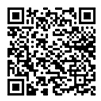Understanding your statement of demat holdings

You should be comfortable with your Demat holdings declaration if you intend to trade in the stock market. Let's look at a scenario to help us understand. If you deposit a check in a branch, you can review your account balance by considering its time for the check to clear. Similarly, when you sell or buy a stock, you must verify if it is debited or credited in your Demat Account by looking at your Demat holdings statement.
You should be comfortable with your Demat holdings declaration if you intend to trade in the stock market. Let's look at a scenario to help us understand. If you deposit a check in a branch, you can review your account balance by considering its time for the check to clear. Similarly, when you sell or buy a stock, you must verify if it is debited or credited in your Demat Account by looking at your Demat holdings statement.

Open a Demat Account
Understanding Demat account :
When you plan to participate in the stock exchange, you must first open a Demat account with a Depository Participant (DP). Broking companies listed with the National Securities Depository Limited (NSDL) or the Central Depository Services (India) Ltd are known as DPs (CDSL). From a DP standpoint, the Demat account is a company Demat account or a client beneficiary account.
Capital market portfolios invested in a Demat account include equity shares, exchange-traded funds (ETFs), mutual funds, bonds, and government securities. A Demat account stores the stock shares electronically, eliminating the need for time-consuming paperwork. Holding the shares in a Demat account allows for digitally protected transfers, eliminating the risk of theft or human error.
It's important to note that a Demat account only houses your stocks; to start investing in financial markets, you'll need to open a trading account as well. Your trading account is a tie to your bank account, and vice versa. For example, if you wish to buy a stock, your buying order will be processed through your Trading account and credited to your Demat account. The payments for the transaction will deduct from your bank account later. You may then look for the purchasing of shares in your Demat holdings statement.
When do you review your holding statement for your Demat account?
According to SEBI regulations, any sale or acquisition made during a trading day's session is reflected in an investor's Demat account after T+2 (Transfer+2 days) days. It means that the required transfer will appear in your account after two business days if you buy a stock. It's crucial to understand the steps involved in the transition at this point:
– To begin, you place a purchasing order through your trading account.
– Second, the stock exchange would deposit the shares in the broking firm's pool account.
– Finally, the funds must withdraw from your account.
– Finally, the broking company deposits the shares in your Demat account within the specified time frame.
Your Demat holding statement would represent the conversion of the shares.
The importance of keeping track of your Demat holdings declaration on a daily basis:
It's critical to regularly keep an eye on your Demat keeping statement to ensure that your Demat account's required share transfers have been making. Although the majority of the time, the transition happens without incident, there is still the possibility of a mistake. Likely, the shares are already in the broking firm's standard pool portfolio, where they're being used to meet other customers' margin needs. In this case, you not only risk losing your money, but you also risk missing out on corporate activity bonuses like dividends and stock splits.
When trading in the stock market, you can always look for a brokerage firm that sends you a free email statement of your demat account holdings, as well as SMS-based transaction updates.
How do you get a clear view of your Demat holdings statement?
If you want to see your Demat assets in real-time, go to the two national depositories' websites: NSDL and CDSL. Using your Demat account number, you will figure out which depository then you'll be registering with. NSDL-registered accounts have a 14-digit numeric number with the prefix: 'IN,' while CDSL-registered accounts have a 16-digit numeric number. You will browse your shares using NSDL's IDeAS service if your Demat account registers with them. This service can access at https://esevices.nsdl.com.
If you have a CDSL account, you can access your declaration using the 'Easi' online service, close to IDeAS: https://web.cdslindia.com/myeasi/registration/Easiregistration. Until you register with one of the depositories, you can get access to your demat account keeping statement without having to go to a broking firm. You will also get a copy of your Consolidated Account Statement (CAS) and look over your whole portfolio.
Conclusion :
As a result, your Demat holdings statement helps you to double-check your stock market assets. It is always best to select a trustworthy and efficient financial partner when beginning your stock market investing journey. Look for features such as 2-in-1 Demat-cum-Trading accounts, as well as SMS-based updates on each transaction. Remember that a reputable financial partner can provide you with fast online access to your demat account keeping statement as well as the ability to download your CAS quickly.
Recent Posts
Download The Dealmoney App Now
Latest Top 10 Performing Funds
| Scheme Name | NAV on | Holdings | Returns (%) | Fund Manager | Rating | |
|---|---|---|---|---|---|---|
| Tata Nifty Pvt Bank ETF | 112.1161 | ₹ 953.7591472 Cr | 24.1384707538614% | Sailesh Jain | 1 | |
| ICICI Pru Technology Fund(G) | 53.41 | ₹ 35414.76052571 Cr | 23.1765904789635% | Sankaran Naren , Vaibhav Dusad , Priyanka Khandelwal | 2 | |
| Edelweiss ETF - Nifty Bank | 2047.9931 | ₹ 72.31 Cr | 22.3638817077987% | Bhavesh Jain , Hardik Verma | 3 | |
| SBI-ETF Nifty Bank | 202.4212 | ₹ 242503.74 Cr | 22.2708812094408% | Raviprakash Sharma | 3 | |
| Kotak Banking ETF | 205.2306 | ₹ 379580.55 Cr | 22.2131952311096% | Devender Singhal , Satish Dondapati | 3 | |
| Motilal Oswal Nifty Bank Index Fund-Reg(G) | 7.3638 | ₹ 4036.5684866 Cr | 22.0669674905138% | Swapnil P Mayekar | 2 | |
| Tata Digital India Fund-Reg(G) | 13.9041 | ₹ 34333.78900578 Cr | 19.4938524951637% | Meeta Shetty , Rahul Singh | 2 | |
| Aditya Birla SL Digital India Fund(G) | 51.49 | ₹ 38115.86 Cr | 19.046875% | Kunal Sangoi | 5 | |
| Kotak Small Cap Fund(G) | 61.52 | ₹ 124241.39 Cr | 18.6944214108026% | Pankaj Tibrewal | 2 | |
| Quant Small Cap Fund(G) | 38.9382 | ₹ 176.1202212 Cr | 17.7394878340161% | Ankit Pande , Vasav Sahgal , Sanjeev Sharma | 1 |
| Scheme Name | NAV on | Holdings | Returns (%) | Fund Manager | Rating |
|---|
